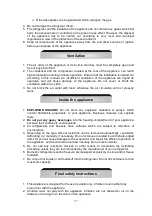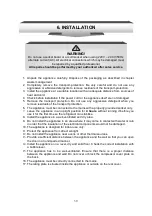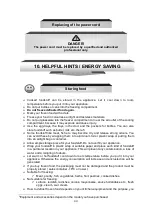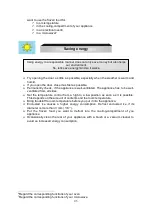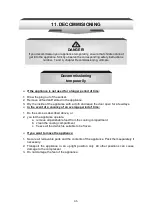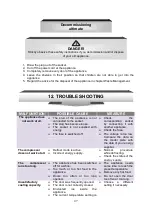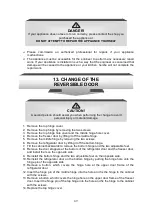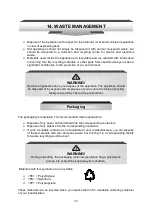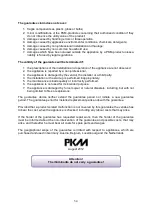
48
too warm
Warm or hot food inside the
appliance.
The appliance is overfilled.
The door seals are damaged
The door makes a
strange sound when
opened.
The door seals are soiled.
Clean the seals with
warm water and a mild,
non-acrid detergent.
The internal light
does not work.
The light is damaged.
.
Contact the after sales
service.
Uncommon sound
during operating
The appliance is not installed on a
level, dry and solid floor.
The appliance is in contact with a
wall or another item. The chilled
goods are incorrectly positioned
Containers inside the appliance
vibrate or touch each other Some
items have dropped behind the
appliance.
Realign the appliance.
Realign the appliance.
Realign the containers.
Realign the chilled
goods.
Remove these items.
If the appliance shows a malfunction not noted on the schedule above or if you have checked
all items on the above schedule but the problem still exists, please contact a service
department.
Check regularly the water drain and the water drain hole. Otherwise water will get into
your appliance or out of the appliance.
Important information: The operating procedures described below are
normal and do not indicate a malfunction
.
The refrigerant generates a sound similar to flowing water.
Sometimes you may hear a sound which is generated by the injection process of
the cooling circuit.
Some humidity may accumulate outside the appliance, especially in a moist
surrounding. Simply wipe this humidity away.
The sides of the appliance may get warm while the cooling circuit of the appliance
is running.
Noise:
when you run the appliance for the first time or the cooling temperature
falls below a certain level it will operate with high power to reach the preset
temperature.
Condensed water :
may be generated inside or outside the appliance by high
humidity or very warm ambient temperatures. Just wipe it with a dry and soft
cloth.
Clicking
– you will hear the compressor click if it is activated or deactivated.
Hum
– is caused by the compressor while running.
Knocking/snapping
– may be generated by sequential expansion and shrinkage
of the components of the cooling system. It is caused by variation of temperature
before and after the compressor is activated or deactivated.




